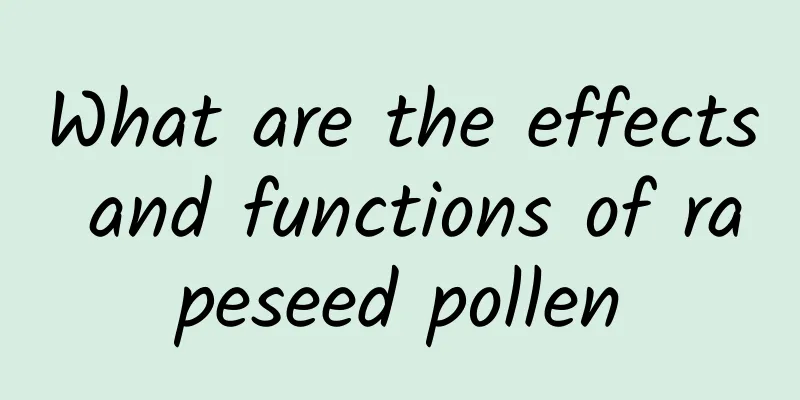What are the medicinal values of Asarum?

|
Asarum is a very common Chinese medicine. The whole plant is used as medicine. It has good effects on antipyretic, diuretic and analgesic. Especially in the cold winter, many people often feel that their bodies are prone to sweating, always coughing, and their throats are dry and their lungs are difficult to breathe because of the invasion of wind and cold. So let us learn about the medicinal value of Asarum. Asarum has the effect of reducing cough. 1. The whole plant is used as medicine, used as antipyretic, diuretic, analgesic and sedative. It can treat headaches and has the effects of inducing sweating and removing phlegm. Northern Asarum is very pungent and pure yang, a very powerful medicine. Its ability to warm and disperse dryness and heat is remarkable. If used properly, its effect will be immediate. Here are some brief examples of its clinical applications. (1) Reduce cough Our ancestors vividly compared the lungs to a bell, saying that "the lungs are like a bell, they ring when struck." External wind, cold, dryness and heat, and internal damage caused by the seven emotions can all affect the lungs, causing the lung qi to lose its normal function of dispersing and descending, resulting in coughing. The cough and breath reversal treated by Northern Asarum are due to external cold evil and internal water retention, which are symptoms of cold both inside and outside. Xiaoqinglong Decoction is its representative prescription. The structure of this prescription can be roughly divided into three groups. The first group of medicines is to use Ma and Gui to relieve the exterior and dispel cold (the original text of "Treatise on Febrile Diseases" is "the exterior of febrile disease is not relieved"), the second group of medicines is to use dried ginger and Pinellia to eliminate water and dampness (the original text of "Treatise on Febrile Diseases" is "there is water vapor under the heart"), and the third group of medicines is white peony root and Schisandra chinensis, which are sweet, sour and astringent, and can moderate the fierceness of the medicinal properties and make it a controlled one. The northern asarum has a unique meaning in the prescription. One meaning is to help ephedra and cinnamon to relieve exterior symptoms; another meaning is to help ginger and summer mulberry to transform phlegm; and the sour and astringent nature of Schisandra chinensis, combined with the pungent and dispersing nature of asarum, are intended to restore the lung's normal function of descending and promoting qi, and to stop coughing and regurgitation, which is the third meaning. The magic of Zhongjing's use of medicine is most fully demonstrated in this prescription. There are two common problems when doctors treat coughs: first, they use a general cough suppressant prescription to stop the cough as soon as it occurs; second, they would rather use heat-clearing and phlegm-resolving medicines than use pungent, warm and strong medicines. For example, snake gall and Fritillaria liquid, Fritillaria and loquat paste, etc., are mostly cooling medicines, so they may be effective for hot coughs, but will make cold coughs worse. Both of them are wrong in that they have lost the spirit of dialectical treatment. Diuretic and anti-edema. At the beginning of nephritis, it is similar to wind-water syndrome, but with the difference of both cold and heat. Its symptoms are edema of the head and face, fear of wind, thin white tongue coating, and floating pulse. For those with heat, thirst, red tongue, yellow coating and rapid pulse, use the modified Yuebi Jiashu recipe (ephedra, gypsum, atractylodes, white atractylodes, cicada shell, white flower snake tongue grass, forsythia, honeysuckle, plantain, wild chrysanthemum, zedoaria, motherwort). For those with cold, pale tongue, white coating, slow pulse, no thirst, and fear of cold, use Master Zhong's recipe for treating Shaoyin counter-heat (ephedra, processed aconite root, northern asarum) combined with Wupi drink (mulberry bark, tangerine peel, ginger peel, tangerine peel, poria peel). It is very effective because northern asarum can both warm the Shaoyin meridian and move water vapor. Often three to five doses can reduce swelling. Although nephritis is often accompanied by increased blood pressure, both Ma and Fu have a pressor effect. Northern Asarum has a good analgesic effect in relieving numbness and relieving pain. It is used to treat toothache caused by wind and fire, with symptoms including swollen and painful gums, preference for breathing cool air, thirst, red tongue, and slippery and rapid pulse. Northern Asarum is often used in combination with gypsum, schizonepeta, saposhnikovia, mint, chuanxiong, red peony root, beehive, angelica dahurica, scutellaria baicalensis, cimicifuga, and licorice. Since it represents "fire", gypsum and scutellaria baicalensis are the right ingredients. Northern Asarum has the advantage of dispersing energy, which means "releasing the depressed fire". This recipe, with the addition of Chuanwu and Zanthoxylum bungeanum, is also very effective in relieving the pain caused by tooth decay. The main medicinal value of asarum is that it has a very good effect in relieving cough, reducing phlegm and detoxifying. Especially in the cold winter, when many colds occur, we can use such a medicine to decoct and take it to eliminate the coldness in the body, induce sweating, and help us reduce fever and cure quickly. |
<<: What are the medicinal values of Curculigo
>>: How to identify the authenticity of American ginseng
Recommend
The efficacy and function of maple willow bark
The development of Western medicine has brought s...
Could sunlight enable our clothes to generate electricity?
Do you know what the sun does? Sunlight can bring...
What are the effects and functions of wind millet husk?
In the wild, you may see a creature like this, wh...
The efficacy and function of summer jasmine
Modern medical research believes that summer swee...
The efficacy and function of arsenic
Everyone is familiar with arsenic, but some peopl...
Is it good to take Maca and American ginseng together?
Today's living environment always brings us t...
There are more than a dozen kinds of red beans, which one is the real "acacia bean"?
Author: Ye Jianfei The article comes from the Sci...
If you want to control gout, you'd better avoid these 8 foods
This article was reviewed by Zhu Hongjian, Chief ...
Were there ever two suns in the sky?
Speaking of the sun, we all know since we were li...
The efficacy and function of water stachys root
Do you know about stachys root? It is a common me...
When the sound environment reaches this standard, the ears feel comfortable.
Produced by: Science Popularization China Produce...
Don't tear off the sticker on the bottom of the thermos cup!!! Otherwise...
Today I will tell you a cold but warm knowledge: ...
Weaving a "giant net" to peer into the universe, how precise is the square kilometer radio telescope array?
Author | Zhou Jihao Audit | Huang Jian Editor | Z...
The efficacy and function of Perilla seeds
Perilla seeds are the dried and mature fruits of ...









